#Buddhist art
Explore tagged Tumblr posts
Text

Grim Park — My Road (korean traditional paint, acrylic on silk, 2022)
13K notes
·
View notes
Photo
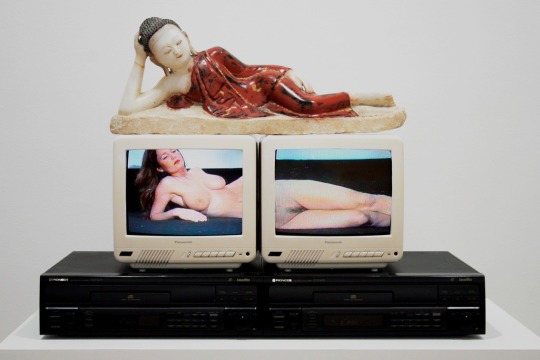
fully Crafted Consciousness - Nam June Paik's Reclining Buddha (1994)
#art#video art#installation#korean artist#contemporary#buddhist art#technology#nam june paik#sculpture
5K notes
·
View notes
Text

head of an adorant | c. 201-500 CE | gandhara (either afghanistan or pakistan)
in the art institute of chicago collection
607 notes
·
View notes
Text

The Moon through a Crumbling Window (Bodhidharma), woodblock print by Tsukioka Yoshitoshi from the series One Hundred Aspects of the Moon, 1887
#art#art history#Yoshitoshi#Tsukioka Yoshitoshi#Asian art#Japan#Japanese art#East Asia#East Asian art#ukiyo-e#woodblock print#Buddhism#Buddhist art#Bodhidharma#Zen Buddhism#Chan Buddhism#Meiji period#Meiji era#19th century art
255 notes
·
View notes
Text

A sculpted image of the wrathful deity Kongō Yasha Myōō (金剛夜叉明王) dating to the 9th century at the Lecture Hall of Tōji Temple (東寺) in Kyoto
Image from "東寺の明王像" [Images of Myōō at Tōji] published by 東寺宝物館 [Tōji Treasure Museum], 1993, page 27
#japanese art#buddhist art#京都#kyoto#東寺#toji#金剛夜叉明王#kongo yasha myoo#kongoyasha myoo#真言宗#shingon#crazyfoxarchives#arte japonés#arte budista
698 notes
·
View notes
Text
[Hanfu · 漢服]Chinese immortal Hanfu Based On Ming Dynasty Zhengtong ear (1439AD)Fahai Temple Murals
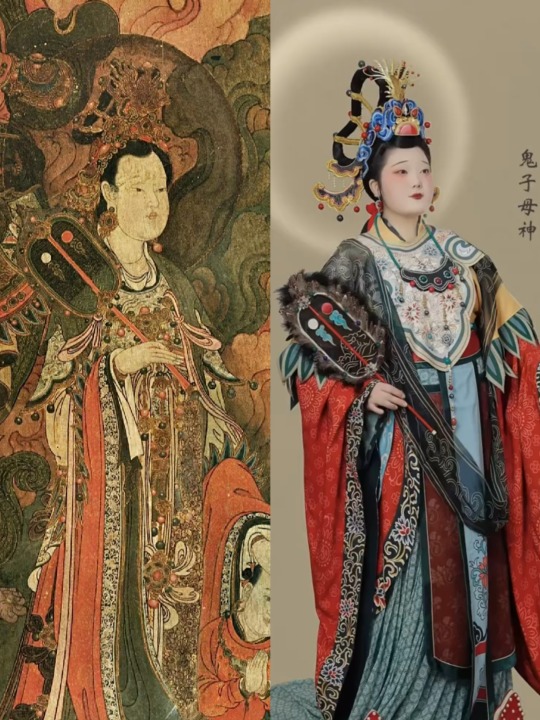
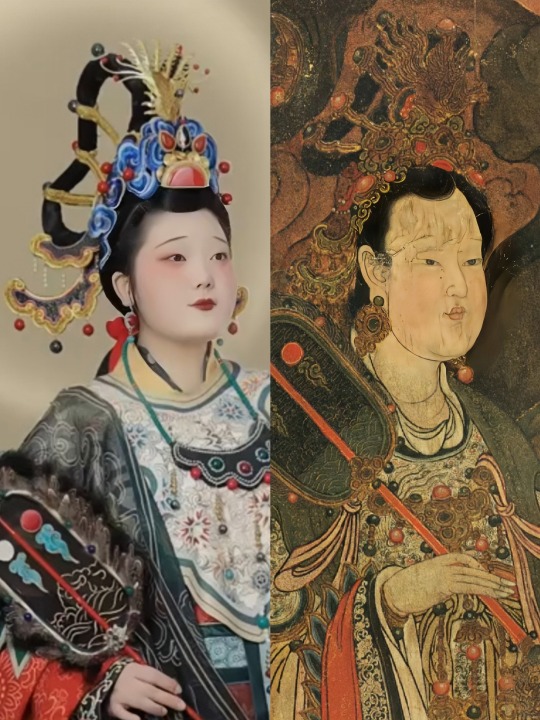





【Historical Artifacts Reference 】:
Ming Dynasty "鬼子母神" in the mural of Fahai Temple in Beijing,China.


【About the "鬼子母神" 】
鬼子母神,also known as Hārītī (Sanskrit),is both a revered goddess and demon, depending on the Buddhist tradition. She is one of the Twenty-Four Protective Deities of Mahayana Buddhism.
In her positive aspects, she is regarded for the protection of children, easy delivery and happy child rearing, while her negative aspects include the belief of her terror towards irresponsible parents and unruly children.
In both Chinese and Japanese Buddhism, she is venerated as a protector deity, but in many folk traditions is often recognized as a female demon of misery and unhappiness towards children and parents.
In Chinese Buddhism, Hārītī is also known as Hēlìdì (訶利帝) or Hēlìdìmǔ (訶梨帝母). In Chinese tradition, she is one of the Twenty-Four Protective Devas (二十四諸天 Èrshísì zhūtiān), a group of Dharmapalas who are venerated as protectors of Buddhists and the Dharma.Statues of this group (and Hārītī) are often enshrined within the Mahavira Hall in Chinese temples and monasteries.
————————
📸Recreation Work:@粉墨长安古典妆造
🔗 Xiaohongshu:http://xhslink.com/cNP1Hz
————————
#chinese hanfu#immortal Hanfu#hanfu#hanfu accessories#hanfu_challenge#china#chinese traditional clothing#chinese#Buddhist#buddhist art#鬼子母神#Fahai Temple Murals#chinese art#ancient china#漢服#汉服#中華風#Ming Dynasty
423 notes
·
View notes
Text


Buddhist votive hanging plaque (Kenan), lotus pond design.
105 notes
·
View notes
Text

加藤巍山 (Gizan Katoh) b. 1968, 示現 (Manifestation)
#kato gizan#gizan katoh#加藤 巍山#japanese artist#buddhist sculptor#japanese sculptor#buddhist artist#buddhist art#japanese art#sculpture#buddhist sculpture#japanese sculpture#art#arte#kunst#obra de arte#kunstwerk#20th century art#artwork#1968#示現#manifestation#vision#jigen#katoh gizan#gizan kato
68 notes
·
View notes
Text
Me, staring at the "Nezha is eternally 12/Nezha is often depicted as a kid so he's just a kid and nothing else" crowd: man, have you heard of Child Manjushri a.k.a. Wenshu Tongzi
(This is totally not an excuse for me to find cool statue pictures and talk iconography)
So, here is Bodhisattva Manjushri in his standard "graceful aristocratic prince" form, riding his azure lion. The statue in the picture doesn't have it, but oftentimes, he'll also be holding a flaming sword that symbolizes wisdom's ability to cut through ignorance and delusions.
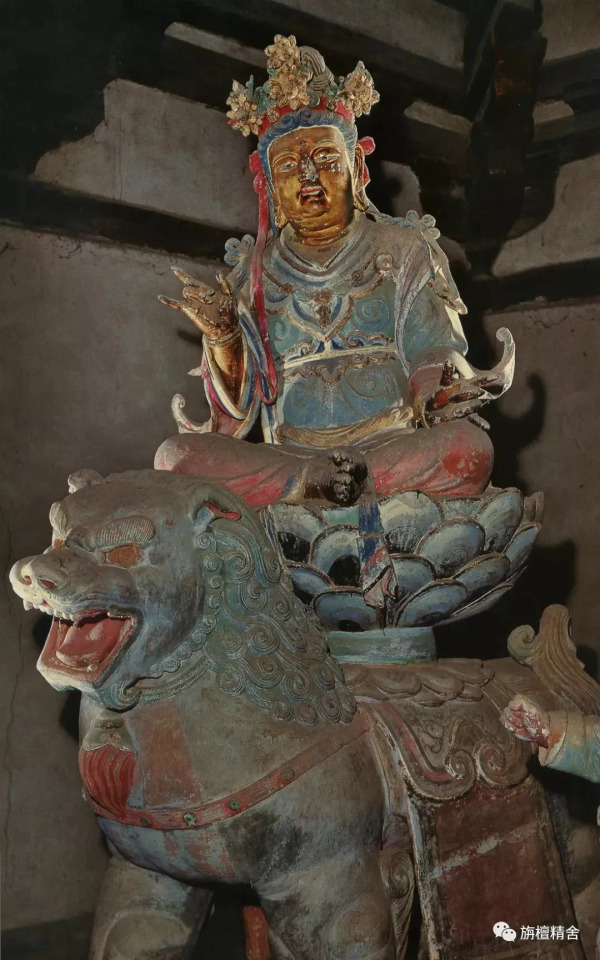
This is "Holy Old Monk Manjushri", a variant that I came across a few times while temple-touring, but couldn't find many good online pictures of. It seemed like a thing that was popular around Mt. Wutai, based on the "Buddha-palita met Old Man Manjushri" tale. Sometimes his BFF Samantabhadra is depicted as an old man too, for matching purposes.
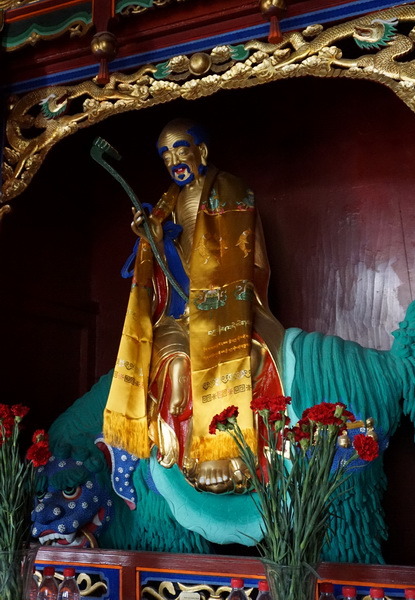
And this is Child Manjushri, with his five hair buns, often worshipped in an esoteric context. On Mt. Wutai, there are five major temples atop five peaks, each worshipping a different form of Manjushri, and the "middle peak" temple has a Child Manjushri in their main hall. Like, it's far from the most common variant, but neither is it this super obscure form that no longer enjoys active worship.

Lastly, just for fun: this is Yamantaka, a guardian deity/Wisdom King, who, in Tibetan Buddhism, is believed to be Manjushri's wrathful form.
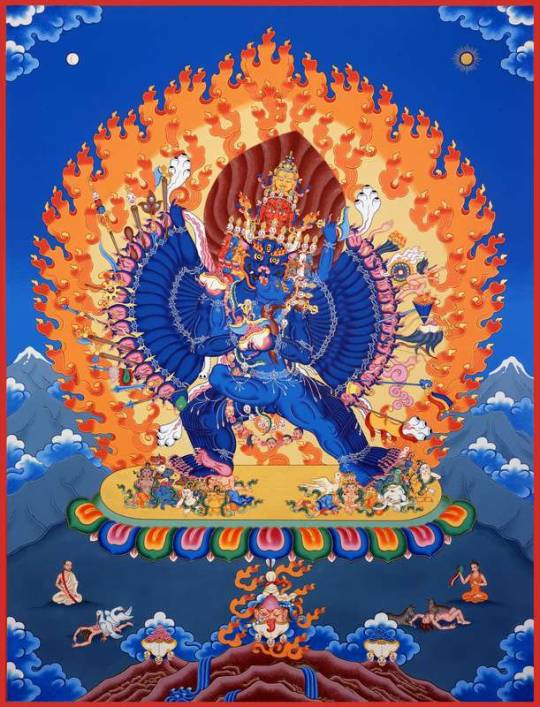
If you wouldn't call Manjushri "the eternal child Bodhisattva" just because he has a child form, why would you say Nezha is an eternal child when he, too, has both child and adult forms?
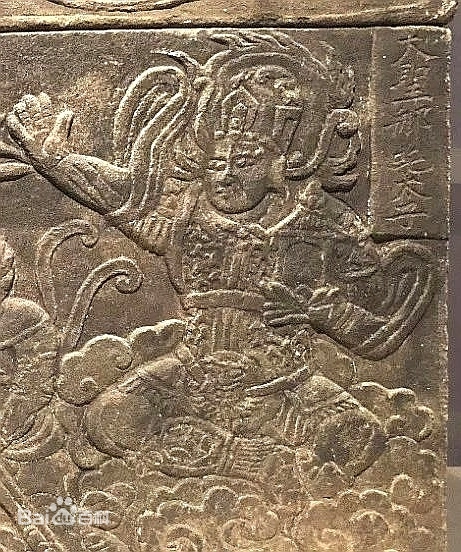
Even though Nezha's child form is vastly more popular and well-known than Child Manjushri, I think my point still stands: A deity is capable of having multiple manifestations, of varying ages and appearances, each fulfilling a particular function and niche——none of which is the "One True Form TM", just different clothes they wear based on occasions and audiences.
To stretch the analogy a little, Manjushri's child form is the formal dress he puts on before attending a religious event, while Nezha's child form is the lotus T-shirt he wears a lot while appearing on TV, to the point it becomes his most iconic attire.
This doesn't mean he only has a single shirt, for goodness sake, and using his child form as evidence for the "eternal child" claim is like saying Nezha's only allowed to wear that one shirt and nothing else.
#chinese mythology#chinese religion#buddhism#manjushri#bodhisattva#nezha#buddhist art#fandom discourse#lego monkie kid#...tagging lmk because where else would I see the “eternally 12” thing proliferate#this will be my only two cents on the topic#barring answering asks that are specifically about Nezha in FSYY/JTTW
155 notes
·
View notes
Text

Victory Over Mara (19th Century)
34 notes
·
View notes
Text



オーダーアート「聖観音様」
従姉妹のララちゃん(@yumikotujii さん)より、お母様(私の叔母様)を見守って下さる聖観音様の絵を、ご依頼頂きました。
ワトソン水彩用紙にアクリル絵の具で描いた聖観音様を、小さな切り株に貼り、グロスバーニッシュで仕上げました。
地模様のある朱赤の布で巾着を作り収め、赤い和紙の箱に入れてお届けしました。
ララちゃん、この度は、素晴らしい制作の機会を賜り、心より感謝申し上げます🙏🙏🙏💕
#artwork#art#アートワーク#アート#acrylicpainting#絵画#芸術#仏画#聖観音様#acrylicart#acrylicpaintiog#buddhist art#受注制作#orderart
102 notes
·
View notes
Text

Grim Park — Moon Play (korean traditional paint on silk, 2024)
1K notes
·
View notes
Text

Acala, The Buddhist Protector, Nepal, Kathmandu Valley, equivalent to February / March 1322. MET (ID: 1994.452) Acala (literally, “immovable”) is a wrathful manifestation of Manjushri. He wields a sword to dispatch ignorance and a noose to snare disbelievers. His enflamed wide eyes and a facial grimace exposing teeth express his fearsome aspect. He kneels with one knee on the ground, evoking his role as a protector of the earth. He is set in a flaming aureole, his knowledge field, and is honored with an elaborate archway (torana) topped by Garuda fighting two nagas. Numerous protective emanations surround him in a series of registers; in the lower register, a Vajracharya priest performs rituals for the benefit of the donor family seated opposite. (MET)
#nepal#nepalese art#nepalese painting#buddha#buddhist#zen#buddhist art#buddhist history#asia#asian history#silk road
29 notes
·
View notes
Text

The resting mind and the moving mind are the union of emptiness and luminosity. We perceive differences due to our confusion. Stillness does not obstruct motion, and motion does not obstruct stillness. They are simply one inseparable entity.
~ Thrangu Rinpoche
66 notes
·
View notes
Text
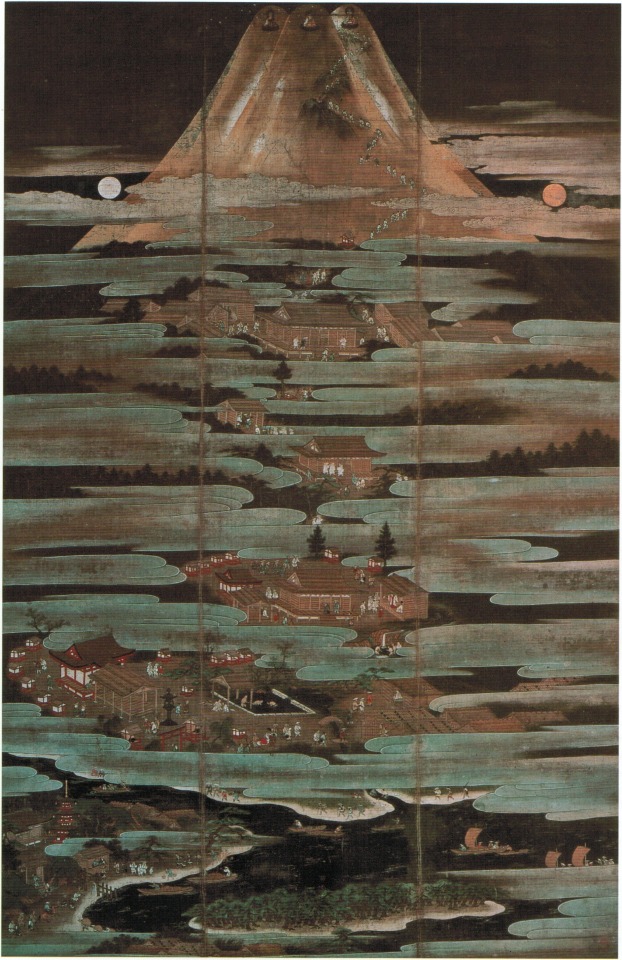
A painted example of the Fuji Mandara (富士曼荼羅), a mandala depicting the sacred landscape of Mount Fuji populated with earnest pilgrims making their way to the peaks above inhabited by three manifesting Buddhist deities
Color on silk dating to the Muromachi period (1336-1573) from the collection of Fujisan Hongū Sengen Taisha Grand Shrine (富士山本宮浅間大社) in Fujinomiya, Shizuoka Prefecture
Image from "Shintō: The Sacred Art of Ancient Japan" edited by Victor Harris, published by the British Museum Press. 2001, page 181
#japanese art#buddhist art#曼荼羅#mandala#静岡県#shizuoka prefecture#富士宮市#fujinomiya#富士山#fujisan#mount fuji#富士山本宮浅間大社#fujisan hongu sengen taisha#富士曼荼羅#fuji mandara#crazyfoxarchives#arte japonés#arte budista#monte fuji
245 notes
·
View notes
Text

A thangka depicting a form of Vajrayogini (?) - Mongolia, 19th century
24 notes
·
View notes